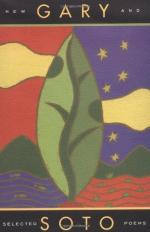|
This section contains 2,630 words (approx. 9 pages at 300 words per page) |

|
SOURCE: “Ambiguity in the Poetry of Gary Soto,” in Revista Chicano-Riqueña, Vol. XI, No. 2, Summer, 1983, pp. 34-9.
In the following essay, de la Fuentes explores Soto's use of ambiguity as a poetic device.
Although Aristotle was “inclined to consider all ambiguity as a perversion or failing of language instead of its natural and valuable quality,”1 by the Seventeenth Century, the Spanish theorist and critic Baltasar Gracián firmly established, in his famous treatise “Agudeza y Arte del Ingenio,”2 the fundamental importance of ambiguity as a poetic device. More recently, the English critic William Empson further clarified the status of this device by stating that “an ambiguity … is not satisfying in itself, nor is it, considered as a device on its own, a thing to be attempted; it must in each case arise from, and be justified by, the peculiar requirements of the situation.”3 In spite of Aristotelean...
|
This section contains 2,630 words (approx. 9 pages at 300 words per page) |

|


